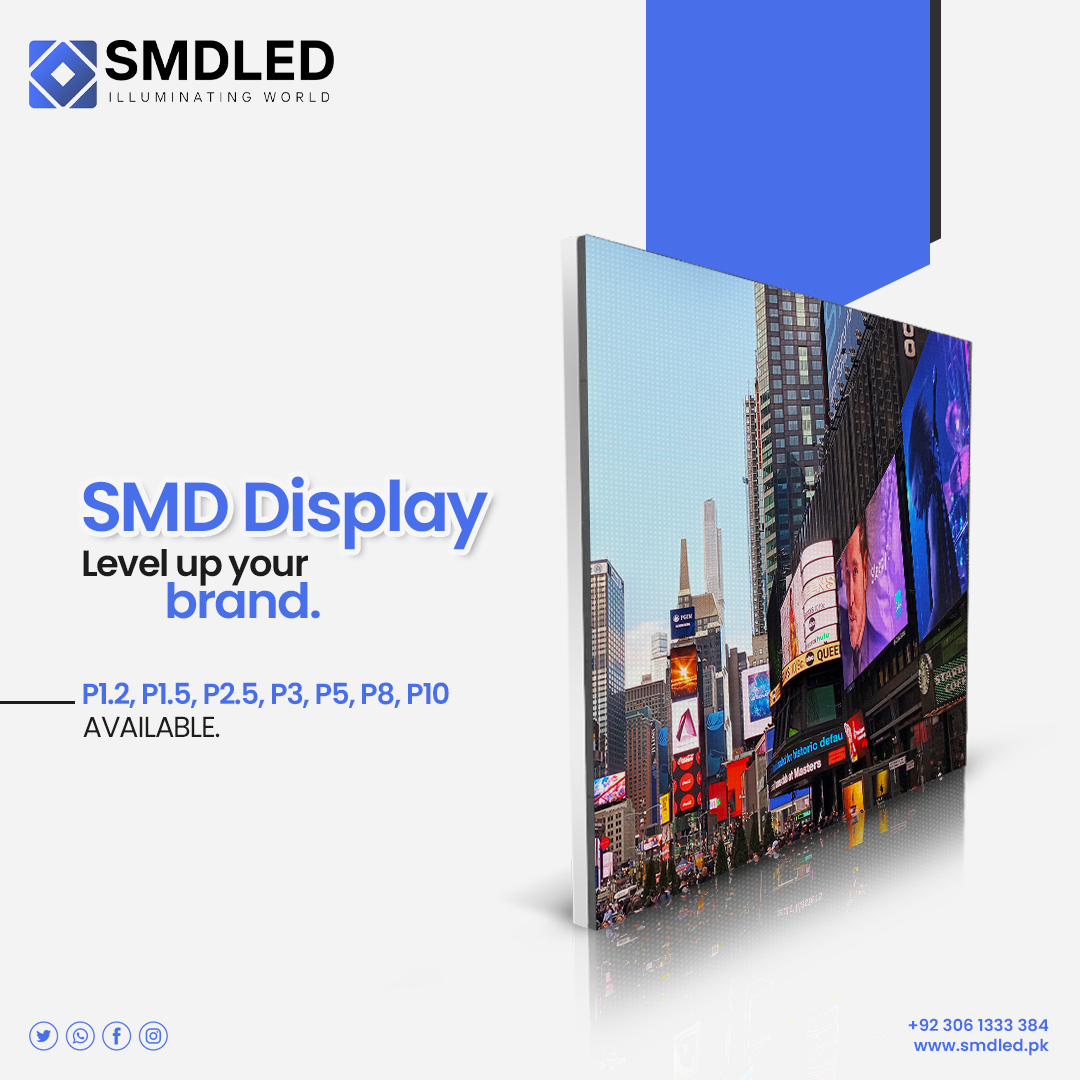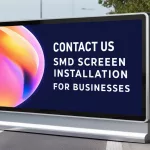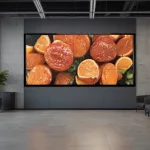Innovations in SMD Screen Design: Thin and Flexible Displays
The ever-evolving world of display technology continues to astonish us with groundbreaking developments that push the boundaries of design. One such innovation that has garnered immense attention in recent years is the advent of thin and flexible displays utilizing Surface Mount Device (SMD) technology. With their sleek profiles and remarkable pliability, these cutting-edge screens have revolutionized the way we perceive and interact with visual information.
In this article, we delve into the realm of SMD screen design, exploring the remarkable features, advancements, and potential applications of this transformative technology. From their inception to the present day, we unravel the intricacies behind the manufacturing process and reveal the underlying principles that enable the creation of these state-of-the-art displays.
Throughout the article, we will delve into the thinness and flexibility achieved by SMD screens, shedding light on the advanced materials, efficient circuitry, and pioneering engineering techniques behind their construction. We will also examine the various benefits and challenges associated with these displays, assessing their durability, image quality, and energy consumption to provide a comprehensive perspective on their viability in real-world applications.
Moreover, by spotlighting the industry leaders driving innovation in SMD screen design, we aim to highlight the potential breakthroughs that lie on the horizon. Through our analysis, we will underscore the ingenious design choices, active research efforts, and collaborative initiatives that contribute to the rapid evolution of these displays, further solidifying their place as the future of visual communication.
Whether you are a technology enthusiast, a designer seeking inspiration, or a business professional evaluating display options, our informative exploration of thin and flexible SMD screens will equip you with the knowledge needed to navigate this transformative realm. Prepare to embark on a journey through the mesmerizing realm of SMD screen design, where innovation knows no limits and the future unfolds before our eyes.
Table of Contents
- Advancements in Thin and Flexible SMD Screen Design
- The Future of Display Technology: Exploring Thinness and Flexibility
- Revolutionizing User Experience: Key Considerations for SMD Screen Design and Implementation
- Optimizing SMD Screen Efficiency: Recommendations for Thin and Flexible Display Innovation
- Q&A
- Key Takeaways
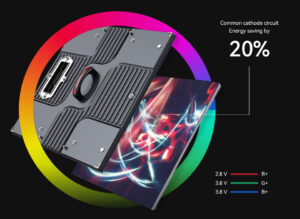
Advancements in Thin and Flexible SMD Screen Design
The world of SMD screen design has witnessed remarkable advancements, particularly in the realm of thin and flexible displays. These innovations have revolutionized the way we interact with screens, offering endless possibilities for industries such as telecommunication, advertising, and consumer electronics.
One of the most significant breakthroughs in thin and flexible SMD screen design is the use of organic light-emitting diode (OLED) technology. These displays are incredibly thin and lightweight, allowing for greater flexibility and portability. With OLED screens, pixels emit their own light, eliminating the need for a backlight and resulting in deeper blacks, vibrant colors, and improved contrast ratios. This technology has opened up new avenues for design, enabling the creation of curved and bendable displays that can be seamlessly integrated into various products.
Moreover, advancements in touch-sensitive capabilities have enhanced the usability of thin and flexible SMD screens. Manufacturers have developed innovative touch sensors that can be seamlessly integrated into these displays, allowing for intuitive and responsive interactions. From smartphones to smartwatches, these displays provide users with an immersive and engaging experience. Additionally, the use of multi-touch technology further enhances the functionality of these screens, enabling users to perform various gestures and actions simultaneously, such as pinch-to-zoom or swipe-to-scroll.
In conclusion, the have transformed the technological landscape, providing us with displays that are not only visually stunning but also highly portable and user-friendly. With OLED technology and touch-sensitive capabilities, these screens have opened up endless possibilities for industries and consumers alike. As the demand for thinner and more flexible displays continues to grow, it is certain that we will witness further innovations in this field, ultimately shaping the future of screen design.
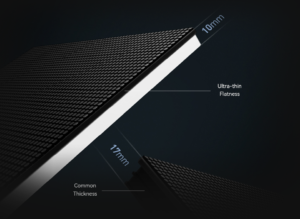
The Future of Display Technology: Exploring Thinness and Flexibility
Advancements in display technology have revolutionized the way we interact with electronic devices. The future of display technology is heading towards thinness and flexibility, as these characteristics offer numerous benefits in terms of portability, versatility, and aesthetics. Innovative breakthroughs in Surface Mount Device (SMD) screen design have paved the way for the development of thin and flexible displays that are set to transform various industries.
One of the key advantages of thin and flexible displays is their ability to conform to different surfaces and shapes, enabling the creation of unique and customized designs. With the increasing demand for curved screens, thin and flexible displays offer a seamless and immersive viewing experience. Whether it is a curved TV screen, a flexible smartphone, or a wearable device, these displays provide enhanced versatility and user satisfaction. Moreover, the slim profile of such screens allows for reduced weight and thickness, making them ideal for mobile devices such as tablets and laptops.
In terms of technological advancements, thin and flexible displays are now capable of delivering high resolution, vibrant colors, and sharp images, comparable to their rigid counterparts. This is achieved through the integration of advanced OLED (Organic Light Emitting Diode) technology, which ensures excellent contrast ratios and wide color gamuts. Additionally, by utilizing ultra-thin materials and innovative manufacturing techniques, SMD screen designs have minimized the bezel size, maximizing the screen-to-body ratio and providing a more immersive visual experience. These developments have not only enhanced the aesthetics of electronic devices but have also opened up exciting possibilities for seamless integration of displays into everyday objects, allowing for a more connected and interactive future.
With ongoing research and development in the field of display technology, the future looks promising for the continued evolution of thin and flexible displays. As the demand for innovative and user-friendly electronic devices continues to grow, manufacturers are pushing the boundaries of SMD screen design to create displays that offer even greater flexibility, durability, and functionality. The convergence of thinness and flexibility in display technology is driving new possibilities across various industries, from entertainment and gaming to healthcare and automotive. As these advancements become more accessible and affordable, we can anticipate a future where thin and flexible displays become the new standard, transforming our interaction with technology and unlocking a world of endless possibilities.
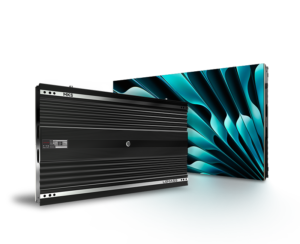
Revolutionizing User Experience: Key Considerations for SMD Screen Design and Implementation
With advancements in technology, the design of SMD screens has gone through a remarkable transformation. One of the most notable innovations in SMD screen design is the development of thin and flexible displays. These screens have revolutionized the user experience by offering a whole new level of convenience and versatility.
Thin and flexible SMD screens are designed to be sleek and lightweight, making them incredibly portable and easy to handle. With their thin form factor, they can be seamlessly integrated into various devices, including smartphones, tablets, and wearables. This allows for a more immersive and engaging user experience, as the screens can adapt to different shapes and contours, providing a truly flexible and interactive interface.
Moreover, these displays also offer improved durability and resistance to damage compared to traditional screens. The flexibility of the SMD screens allows them to absorb impact and withstand bending, making them more resistant to accidental drops and impacts. This greatly enhances the longevity of the devices, reducing the need for repairs or replacements.
In addition to their physical advantages, thin and flexible SMD screens also deliver exceptional visual quality. These displays are designed to provide vibrant colors, sharp images, and wide viewing angles, ensuring a superior visual experience for users. Whether it’s watching videos, playing games, or browsing the web, the high-quality display of these screens enhances every aspect of the user experience.
The adoption of thin and flexible SMD screens has opened up a world of possibilities for device manufacturers and designers. Not only can they create devices with sleek and modern designs, but they can also explore new concepts and functionalities that were previously unachievable with traditional screens. From foldable smartphones to wearable gadgets, the potential for innovation is limitless.
In conclusion, the design and implementation of thin and flexible SMD screens have revolutionized the user experience. With their portability, durability, and exceptional visual quality, these displays offer a whole new level of convenience and versatility. As technology continues to progress, we can expect further advancements in SMD screen design, unlocking even more possibilities and opportunities for creating innovative and immersive user experiences.
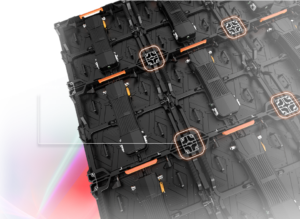
Optimizing SMD Screen Efficiency: Recommendations for Thin and Flexible Displays Innovation
Efficiency Considerations for Thin and Flexible SMD Screens
As technology continues to advance, SMD screens have become thinner and more flexible, allowing for exciting new possibilities in display design. However, optimizing the efficiency of these screens requires careful consideration of various factors. Here are some key recommendations to enhance the performance and functionality of thin and flexible SMD displays:
1. Choice of Materials
When developing thin and flexible SMD screens, selecting the right materials is crucial. Opt for lightweight materials that are highly durable and have good heat dissipation properties. This will not only ensure optimal performance but also extend the lifespan of the display. Additionally, consider utilizing materials with high light transmittance to maximize brightness and improve overall image quality.
2. Energy Efficiency
Incorporating energy-efficient components into the design is essential for optimizing the efficiency of thin and flexible SMD screens. Explore using low-power consumption LED chips and advanced power management systems to minimize energy waste while maintaining excellent image quality. Implementing automatic brightness adjustment based on ambient lighting conditions can further enhance energy savings. Remember, energy-efficient displays not only reduce environmental impact but also result in cost savings for the end-users.
3. Minimizing Reflection and Glare
To achieve optimal viewing experiences, it is essential to minimize reflections and glare on thin and flexible SMD screens. Consider incorporating anti-glare coatings or matte finishes to reduce the impact of external light sources and enhance visibility, especially in challenging lighting conditions. Experimenting with different surface treatments can help strike a balance between display aesthetics and reducing unwanted reflections.
4. Moisture Resistance
Thin and flexible SMD displays often face exposure to various environmental factors, including moisture. To ensure longevity and reliability, focus on developing moisture-resistant screens. Implementing advanced sealing techniques, such as nano-coatings or silicone gaskets, can effectively protect the display against moisture infiltration, minimizing the risk of damage or malfunctions.
5. Ergonomic Design
Incorporating an ergonomic design into thin and flexible SMD screens can greatly enhance user experience. Consider factors such as weight distribution, easy installation, and flexibility to fit various applications. Explore options for adjustable mounting solutions or modular designs that offer versatility and adaptability. Prioritizing user comfort and convenience will undoubtedly increase the appeal of these advanced display solutions.
Table 1: Comparison of Key Materials
| Material | Advantages | Disadvantages |
|---|---|---|
| Indium Tin Oxide (ITO) | High electrical conductivity Durable and scratch-resistant |
Brittle nature Expensive |
| Silver Nanowire | Flexible and transparent Cost-effective |
Sensitive to moisture Lower conductivity than ITO |
| Graphene | Excellent electrical and thermal conductivity Highly flexible |
Costly to produce at scale Challenges in integration |
Q&A
Q: What are some recent innovations in SMD screen design?
A: Recent innovations in SMD screen design have focused on creating thin and flexible displays, providing enhanced versatility and convenience for various applications.
Q: How are these thin and flexible displays different from traditional screens?
A: Thin and flexible displays differ from traditional screens primarily due to their slim profile and the ability to bend, curve, and conform to different surfaces. These displays utilize advanced technology and materials to achieve higher flexibility and durability.
Q: What are some advantages of using thin and flexible displays?
A: Thin and flexible displays offer several advantages, including lightweight design, improved portability, and enhanced aesthetic appeal. These displays can be curved or wrapped around objects, enabling innovative design possibilities and seamless integration into different products.
Q: What industries can benefit from the implementation of thin and flexible displays?
A: Various industries can benefit from the implementation of thin and flexible displays. These include consumer electronics, automotive, healthcare, advertising, and wearable technology. The versatility offered by these displays allows for unique applications within each industry.
Q: How are thin and flexible displays achieved?
A: Thin and flexible displays are achieved through the utilization of advanced technologies and materials such as Organic Light Emitting Diodes (OLED), Flexible Printed Circuit Boards (FPCB), and Thin-Film Transistor (TFT) technology. These components allow for the creation of screens that can bend and flex without compromising performance.
Q: Are there any limitations or challenges associated with thin and flexible displays?
A: While thin and flexible displays offer numerous advantages, there are some limitations and challenges to consider. These include the cost of production, potential durability issues over time, and the need to develop new manufacturing techniques to accommodate the unique characteristics of these displays.
Q: How does the implementation of thin and flexible displays impact the user experience?
A: The implementation of thin and flexible displays greatly enhances the user experience. These displays provide greater immersion, improved visual quality, and a more intuitive interaction with the device or product. Additionally, the flexibility of these displays allows for unique and ergonomic designs, enhancing comfort and usability.
Q: What can we expect for the future of SMD screen design?
A: The future of SMD screen design will likely continue to focus on further improving the flexibility, durability, and visual quality of displays. Additionally, advancements in technology and materials will likely lead to even thinner and more lightweight screens, facilitating new possibilities for integrating displays into various objects and surfaces.
Q: How will the advancements in thin and flexible displays impact product design and development?
A: The advancements in thin and flexible displays will significantly impact product design and development by providing greater freedom and creativity to designers. Products can now have sleeker, more ergonomic designs, and screens can be seamlessly integrated into unconventional shapes and surfaces. Additionally, the implementation of thin and flexible displays opens up new opportunities for innovative and unique user experiences.
Key Takeaways
In conclusion, the advancements in SMD screen design have revolutionized the world of displays, particularly with the introduction of thin and flexible screens. These innovative technologies have opened doors to a myriad of possibilities, offering unparalleled flexibility, durability, and efficiency.
With the ability to bend and curve, these thin and flexible displays provide an unmatched level of versatility, enabling designers and manufacturers to create products with unique form factors and enhanced user experiences. From curved smartphones and wearable devices to curved televisions and automotive displays, the potential applications seem endless.
Furthermore, the thinness of these screens has drastically reduced the weight and thickness of devices, resulting in sleeker and more portable designs. In addition, the reduced power consumption of these displays not only extends battery life but also contributes to a greener and more sustainable environment.
Moreover, the advancements in SMD screen design have also improved the visual experience, offering vibrant colors, high resolution, and excellent contrast ratios. The enhanced picture quality has enhanced the way we consume media, whether streaming videos, playing games, or viewing multimedia content.
However, it is important to note that these innovations come with their own set of challenges. Manufacturers need to ensure that the thin and flexible screens maintain their durability and withstand potential wear and tear. Additionally, the production costs associated with these advanced technologies need to be addressed to make these displays more accessible to a wider audience.
Nonetheless, the potential benefits and possibilities offered by thin and flexible SMD screens outweigh these challenges. As advancements continue, we can expect even more exciting developments in this field, with screens becoming thinner, lighter, and more flexible while still maintaining their performance and durability.
In conclusion, the innovations in SMD screen design have undoubtedly transformed the landscape of displays, with the introduction of thin and flexible screens showcasing immense potential. As these technologies continue to evolve, we eagerly anticipate a future filled with even more astonishing advancements, enabling us to experience visuals like never before.
SMD Screen Design, Thin and Flexible Displays
Contact Us For Free Consultation at 0306-1333384
Powered By BIACommunication


